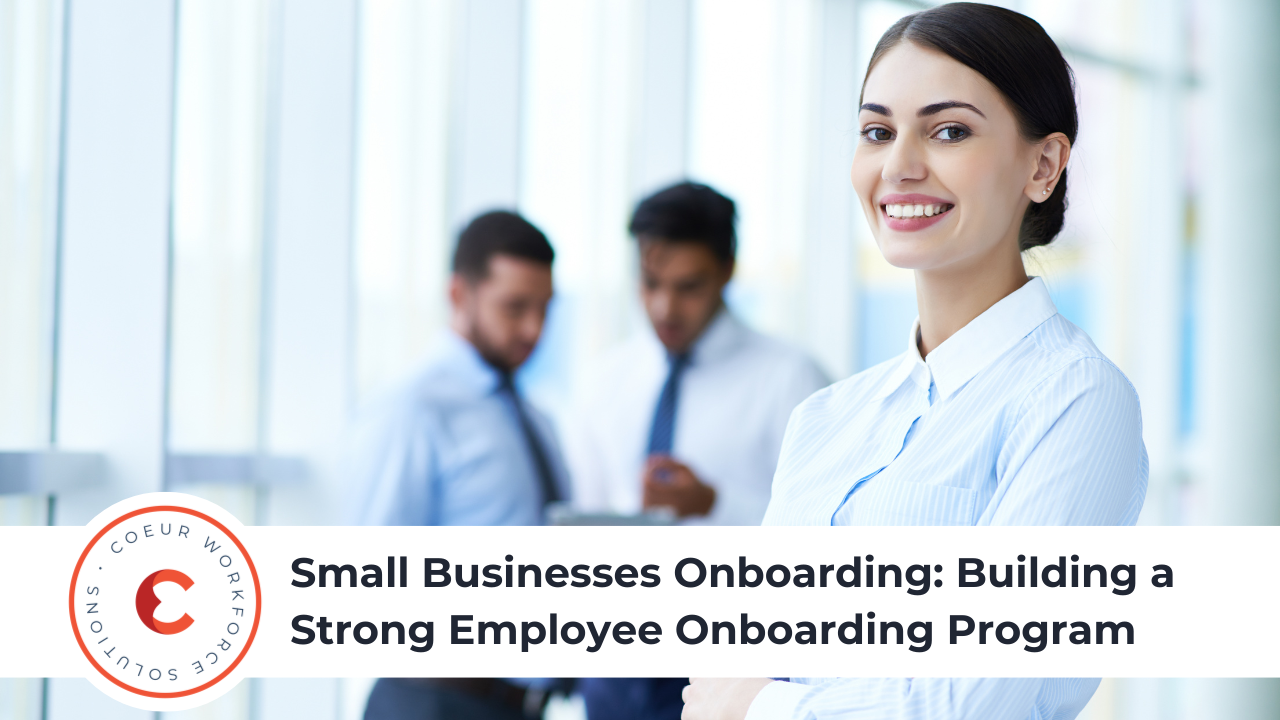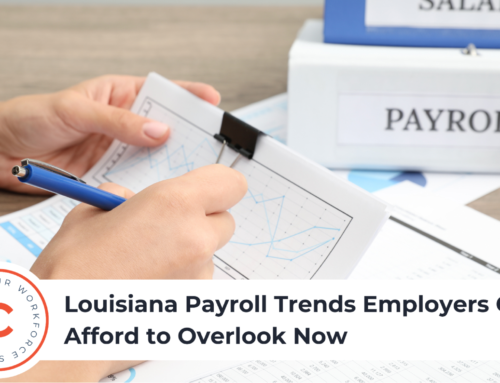If we asked how many of your employees know within their first ten days whether they’ll be looking for work within the next 18 months, would you be able to give an answer?
Employee satisfaction can make or break a small business. Ensuring your new hire feels your company is a great place to work begins long before their first day. An official employee onboarding program can help retain top talent for your business as well as set the tone for the company culture.
Onboarding is Important for Every Small Business
Did you know the average US employer spends $4000 on a new employee? That means every time you bring in a new employee, you’re spending thousands of dollars. This is expensive even if you don’t experience a high turnover rate. If you find yourself hiring and rehiring for the same positions, you could be losing money.
Conversely, small businesses with an official onboarding program win with a 60% year-to-year improvement in productivity. The proof is in the data – setting up a formal onboarding program can set your business and employees up for success.
How to Create a Small Business Onboarding Program
The first step may not be the first thing that comes to mind – you need to define your goals. When you set goals for your onboarding, it’s easier to determine what you want to get from the program.
 For successful onboarding, you should consider the process before you even start hiring. Onboarding begins as soon as your new hire receives their job offer. Time after time, we’ve seen that engaging them from an early stage makes the onboarding program more effective.
For successful onboarding, you should consider the process before you even start hiring. Onboarding begins as soon as your new hire receives their job offer. Time after time, we’ve seen that engaging them from an early stage makes the onboarding program more effective.
As reported by Gallup, only 12% of employees are satisfied with their company’s current onboarding program. This is an area no small business can afford to overlook. 88% seems like a large percentage of businesses with a bad onboarding program, but the misstep quickly becomes apparent when you note that most companies prioritize paperwork and basic processes.
You have to be strategic in order to create a successful onboarding program. Focus more on people and less on processes. When you’ve decided on your goals, create the foundation for your new hire onboarding program.
To do this successfully, you want to focus on these three areas:
Assimilation and Socialization:
Proper assimilation into a company goes beyond individual happiness, affecting team dynamics and overall profitability. Enhancing new hire onboarding with team-building activities and mentorship programs can boost engagement, productivity, and employee satisfaction.
Documents and Tasks:
There will always be a list of documents and tasks that need to be completed by new hires. Measure progress by setting milestones for the first week, the first month, the first year, etc.
Education and Training:
 Teaching someone how to do a job effectively and setting proper expectations is something that most companies struggle with. Make sure to set specific goals. The target should not only be measurable, like increasing sales by 10%, or improving employee retention by 25%, but the training program should allow you to attain it.
Teaching someone how to do a job effectively and setting proper expectations is something that most companies struggle with. Make sure to set specific goals. The target should not only be measurable, like increasing sales by 10%, or improving employee retention by 25%, but the training program should allow you to attain it.
The free Employee Onboarding Guide PDF covers in-depth what to address in each area.
Establishing Milestones
After you set your goals and establish the onboarding program, it’s time to set milestones. Without them, you won’t have a way of measuring the success of your new onboarding program. Milestones can also help identify areas of improvement within your program.
Feedback is vital to the success of your program, so be sure to check in with your new employee at the end of their first week. Your milestones should be driven by goals you want your new hire to achieve. You can use these KPIs to determine their success in the role. Tools such as a check-in template are helpful for making notes of any concerns or feedback to share during milestone meetings. It’s important to note these are mutual check-ins, meant for both you and your employee.
Most businesses set their goals at 30, 60, and 90 days, but ultimately, it’s up to you. After each milestone meeting, you can adjust future goals to reflect your new hire’s progress. After the final onboarding check-in, typically 90 days, you can establish the next milestones at 6 months and 1 year. Our free Employee Onboarding Guide PDF contains a milestone section to help you set up your program with SMART goals.
Mentor Programs as Part of Onboarding
Incorporating mentorship into the onboarding process offers a strategic solution to reduce employee turnover.
These programs not only foster more efficient and productive workers but also enhance the company’s profitability. By assigning a mentor to every employee, regardless of their role or length of service, organizations can offer support for skill enhancement and a go-to person for workplace issues.
Mentorships are particularly valuable as they bridge the gap in knowledge, helping employees navigate areas they might not even realize they need to improve on. Having a mentor can also alleviate the feeling of isolation at work, providing both personal and professional support.
Work can sometimes be a lonely place, and it helps to have an advocate both personally and professionally.
Final Thoughts
The initial days of onboarding are critical not only for their future at your company but also for the overall health and success of your business. A well-structured onboarding program is not just a nice-to-have; it’s a strategic investment that pays dividends in employee satisfaction, retention, and productivity.
By focusing on a human-first approach that emphasizes goal setting, assimilation, socialization, and personalized mentorship, businesses can transform their onboarding process into a powerful tool for fostering a supportive and productive workplace culture.
Remember, the effort and resources you put into onboarding new employees reflect directly on your business’s ability to grow, innovate, and lead in your industry. So, take the time to review, refine, and invest in an onboarding program that sets every new hire—and your business—up for success.





